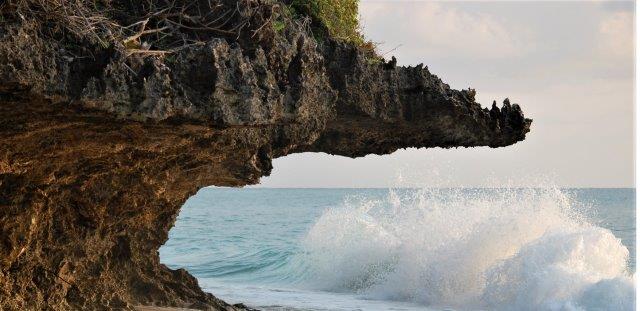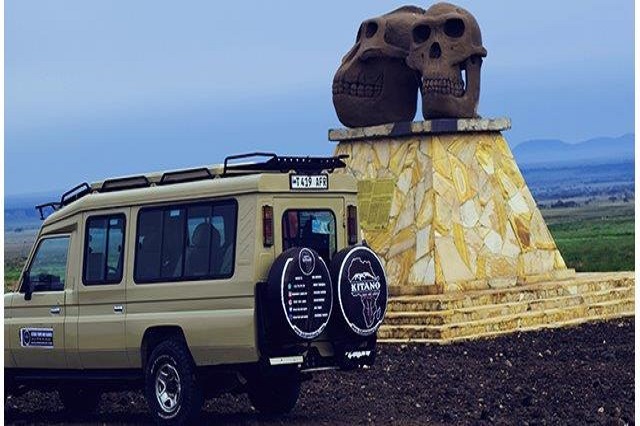When it comes to clothing, layering is key. The temperatures on Mount Kilimanjaro can vary greatly, so it's important to have clothing that can adapt to different weather conditions. Start with a moisture-wicking base layer to keep you dry and comfortable. Add a mid-layer for insulation and a waterproof and windproof outer layer to protect you from the elements. Don't forget about your extremities – bring warm gloves, a hat, and thick socks to keep your hands and feet warm.
Proper footwear is also essential. Invest in a pair of sturdy hiking boots that provide ankle support and have a good grip on various terrains. Make sure to break them in before your climb to avoid blisters and discomfort.
Aside from clothing, you'll also need to consider the equipment you'll be carrying. A good backpack is crucial for carrying your gear, snacks, and water. Look for one with adjustable straps and a hip belt for added support. Don't forget to bring a headlamp, trekking poles for stability, and a water bottle or hydration system to stay hydrated throughout your climb.
Training and Fitness Preparation
Training for the Mount Kilimanjaro climb is essential for success. Climbing a mountain of this magnitude requires physical endurance and strength. It's important to start your training well in advance to ensure you are adequately prepared.
Focus on building your cardiovascular fitness through activities such as running, cycling, or swimming. These exercises will help improve your lung capacity and endurance, which are crucial for climbing at high altitudes. Incorporate strength training exercises to build muscle strength, especially in your legs and core.
In addition to physical training, it's also important to acclimatize your body to higher altitudes. Gradually increase your exposure to higher elevations by going on hikes or climbing smaller mountains in your area. This will help your body adjust to the decreased oxygen levels and reduce the risk of altitude sickness.
Understanding Altitude Sickness
Altitude sickness can occur during a Mount Kilimanjaro climb. It is a condition that can affect anyone, regardless of their fitness level or previous climbing experience. Altitude sickness occurs when the body is unable to adapt to the thin air and reduced oxygen levels at high altitudes. Symptoms of altitude sickness can range from mild to severe and may include headaches, nausea, dizziness, and fatigue. In severe cases, it can lead to more serious conditions such as high altitude pulmonary edema (HAPE) or high altitude cerebral edema (HACE), which can be life-threatening. Proper preparation and training can help prevent altitude sickness. Gradual acclimatization, as well as staying hydrated and well-rested, are key factors in reducing the risk. It's important to listen to your body and pay attention to any symptoms that may arise during your climb. If you experience severe symptoms, it's crucial to descend to a lower altitude immediately and seek medical attention if necessary.
Importance of Acclimatization
Acclimatization is crucial for a successful Mount Kilimanjaro climb. It involves gradually exposing your body to higher altitudes to allow it to adapt to the decreased oxygen levels. Without proper acclimatization, the risk of altitude sickness significantly increases.
During your climb, your itinerary should include rest days at various altitudes to allow your body to adjust. These rest days are essential for your body to build red blood cells and increase oxygen-carrying capacity. It's important to follow your guide's recommendations and not rush the ascent. In addition to rest days, it's important to stay hydrated and well-nourished throughout your climb. Drink plenty of water and eat nutritious meals to support your body's energy needs. Avoid alcohol and caffeine, as they can contribute to dehydration.
Creating an Itinerary
Creating a well-planned itinerary is crucial for a successful Mount Kilimanjaro climb. It's important to consider the duration of your climb, the routes available, and the physical demands of each route. The duration of your climb will depend on the route you choose and your physical fitness level. Most climbers opt for a 6-8 day trek to allow for proper acclimatization. It's important to choose a route that suits your abilities and allows enough time for rest and acclimatization.
What is the weather on kilimanjaro
| mouth | temperate | precipitation | cloudiness | crowds |
|---|---|---|---|---|
| January | warm | medium | low | high |
| February | warm | medium | low | high |
| March | moderate | high | medium | low |
| April | moderate | high | high | low | May | moderate | high | high | low |
| june | cold | medium | medium | medium |
| july | cold | medium | low | high |
| August | cold | low | low | high |
| September | moderate | low | low | high |
| October | moderate | low | medium | medium |
| November | Moderate | medium | high | low |
| Desember | Moderate | medium | medium | medium |
Though it is the time with least crowds one of my Kilimanjaro tips would be to avoid the wet season from March-May and in November as bad weather drains your energy and therefore reduces your chances of making it to the top. Your best bet if you want to avoid the masses is therefore the shoulder season in early July and December(except for the time around christmas/new years), the time from January to February is still popular as the temperatures are higher but the chances of rain for both timeframes are about 50/50..



.jpg)